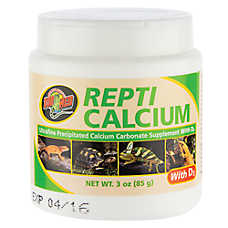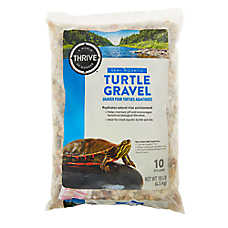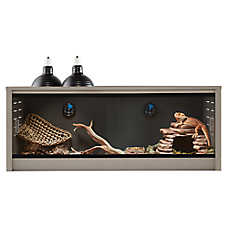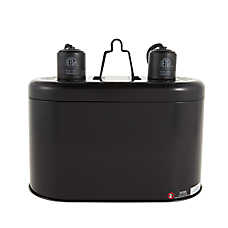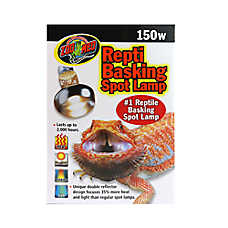Red-Footed Tortoise Care Guide
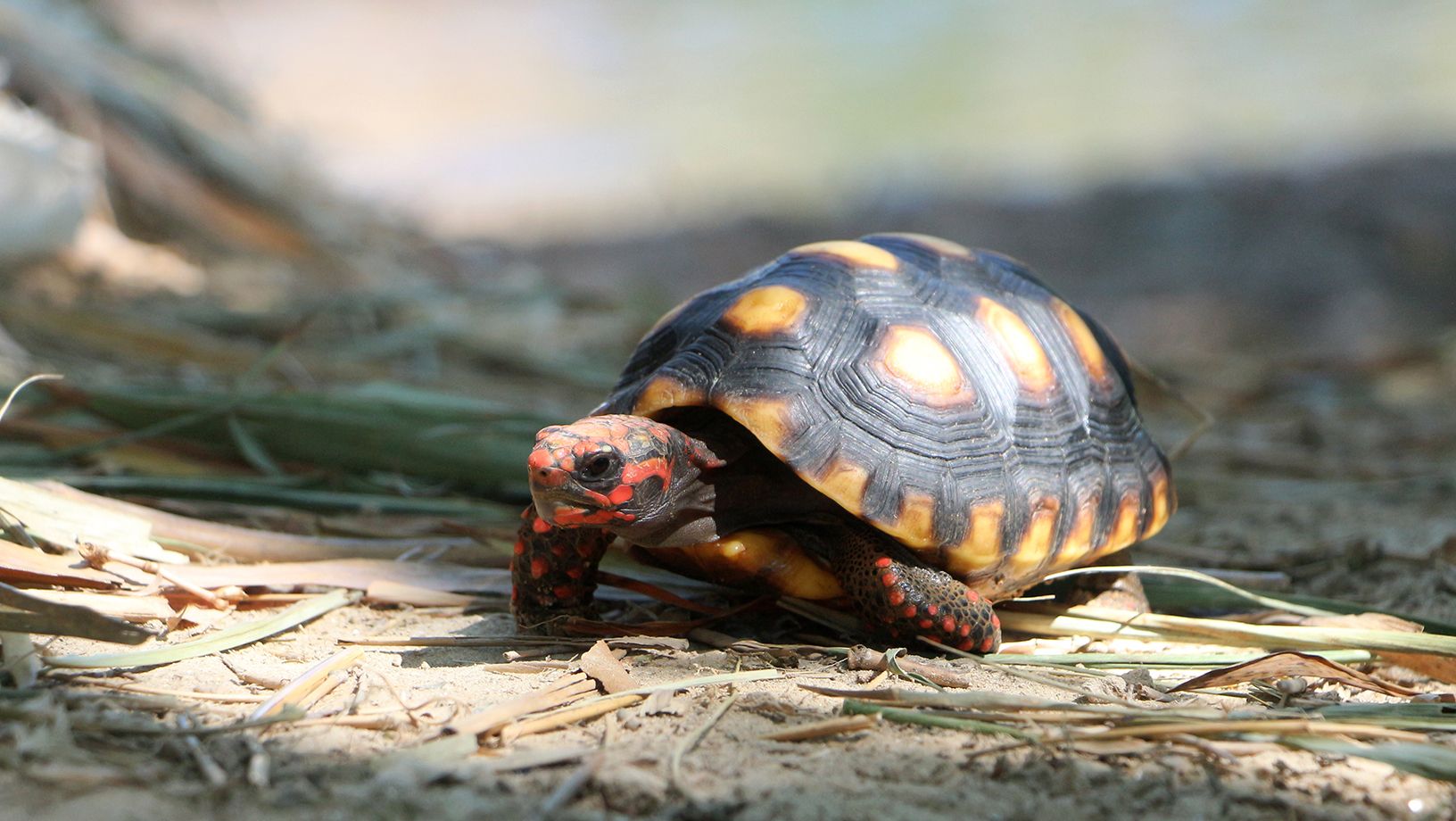
In this Article
Radical Red-Footed Tortoise!
Red-footed tortoises are a medium sized tortoise that is native to South America. They can be found across a variety of environments, from arid grasslands to tropical forests. Unlike turtles, tortoises are land-dwelling and do not swim. These cute tortoises have lots of variety in their appearance, mostly due to the different environments they come from! They are full of personality, and owners often report that their tortoise will run (well, running speed for a tortoise) over to beg for food, and enjoy being rubbed on their head and neck.
Red-footed tortoise species profile
Size: Red-footed tortoise grow up to 14" (35cm) shell-length.
Lifespan: They can live up to 50 years
Habitat needs: Warm, humid, fully terrestrial
Behavior: Red-foots are very bright tortoise and learn patterns quickly. Because of that, people report they learn to identify their care givers quickly and may approach you looking for snacks. They are not super social with other tortoise, but are not very prone to territorial behaviors. This is to say your tortoise will be perfectly happy as an only child, but will probably do okay with one other tortoise if you want multiple.
Temperament: Red-footed tortoises are considered to be the friendliest of the tortoises and can become very accustom to human interaction
Handling tips: A hungry or excited tortoise may mistake your finger for treats, so use caution when hand feeding. Placing treats on a dish, on the floor of the enclosure, or offering treats that are longer so you have some distance between your fingers and your tortoise’s mouth (like a lettuce leaf, for example) are all good options.
Setting up your red-footed tortoise habitat
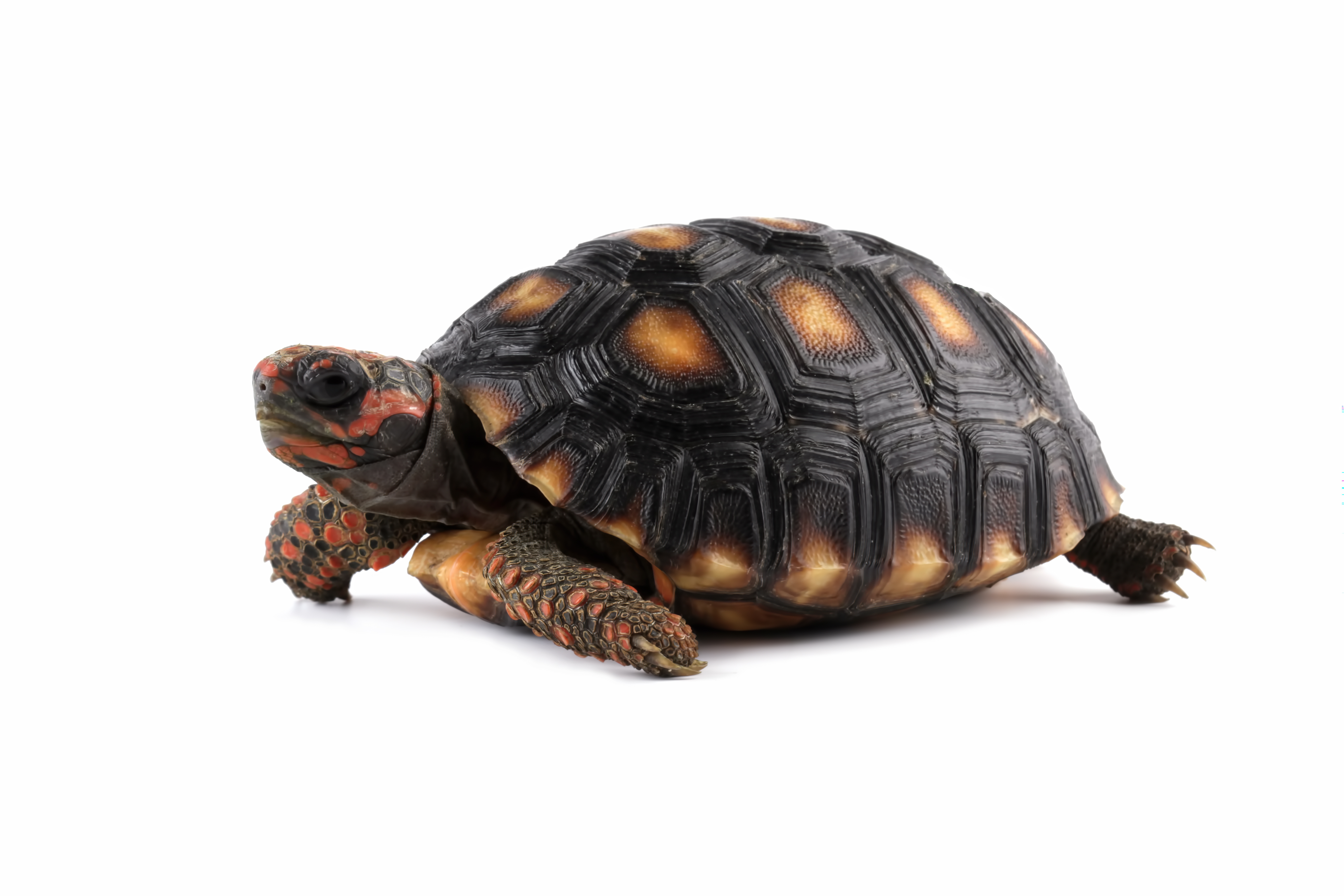
Red-footed tortoises need a spacious, humid environment with steady access to warmth, shelter, and UVB light. Proper substrate, heating, and lighting are key to keeping your tortoise active and healthy.
Enclosure setup
- Size: A single juvenile tortoise needs at least a 50-gallon enclosure with a screened lid for ventilation
- Substrate: Use 2–3 inches of tortoise-safe substrate such as reptile carpet, cypress mulch, bark-style bedding, or moss
- Avoid sand or gravel, which may be accidentally ingested and lead to dangerous intestinal blockages
- Lighting: Set up your reptile lighting outside the terrarium, over top the screened lid, so your tortoise has a warm area to bask in but cannot get so close to the bulb that they are burned.
- Place a high-wattage basking lamp directly above an open area designated for basking during the day. At night, use a ceramic heat-emitter, under-tank heater or nighttime heat bulb.
- Many reptiles benefit from having access to UVB lighting. UVB allows the body to synthesize vitamin D3 which is critical for absorption of calcium. Some daylight bulbs will be rated to also provide UVB, and some won’t so it is important to check. Providing low-intensity UVB light over the basking site is recommended.
- Add large hides on both sides of the enclosure so your tortoise can regulate their temperature, even at rest.
- Cleaning: Remove droppings daily and change substrate monthly, or more often if soiled
Temperature and humidity
Red-footed tortoises need a temperature gradient to self-regulate, meaning one side of their habitat should be warm and one side should be a little cooler. Place thermometers on both the warm and cool ends of the enclosure and use a hygrometer to monitor humidity.
Zone | Temperature |
Cool side | 70–85°F (21–30°C) |
Warm side | 85–90°F (29–32°C) |
Basking spot | 90–95°F (32–35°C) |
Night | 70–80°F (18–27°C) |
Humidity | 50–80% |
Feed your red-footed tortoise
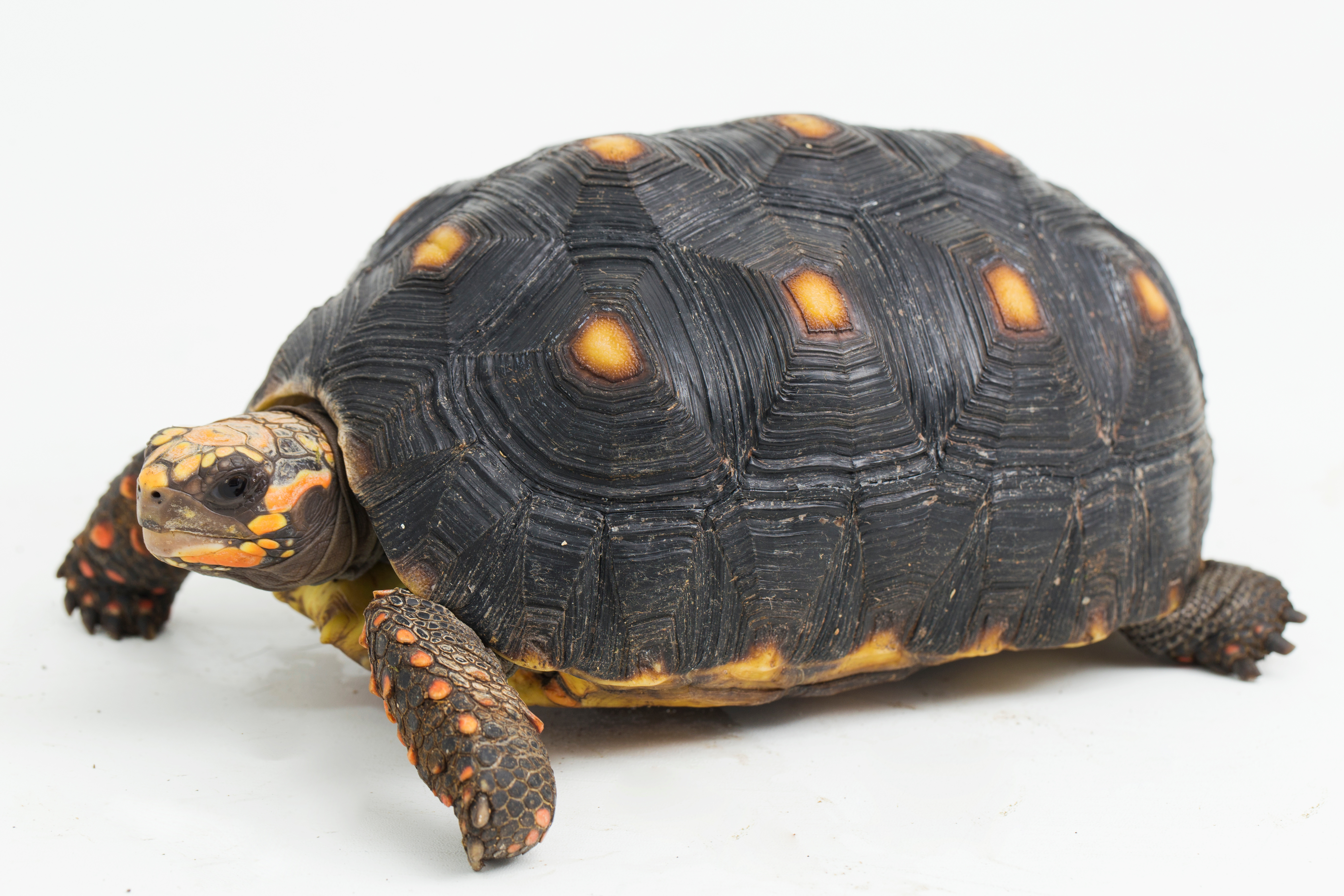
Red-footed tortoises are omnivores with a strong preference for leafy greens, fruits, and occasional protein. Feed during the day when your tortoise is most active, and always use a shallow feeding dish to reduce the risk of ingesting substrate.
Daily greens
- Offer once per day:
- Spring mix
- Dark leafy greens
- Assorted vegetables
- Supplements:
- Calcium powder: 2–3 times per week
- Reptile multivitamin: Twice per month or as directed by your veterinarian
Occasional fruit
- Once or twice a week:
- Berries
- Melon
- Kiwi
- Banana
- Apple slices
Protein (every 3–4 weeks)
While not a staple, red-footed tortoises benefit from occasional high-protein foods:
- Gut-loaded mealworms, crickets, or dubia roaches
- Appropriately sized, frozen-then-thawed rodents
- Unseasoned cooked chicken or shrimp
- Superworms
- Hard-boiled egg
Water
- Provide clean, fresh water at all times
- Use a shallow dish wide enough for soaking
- Wash and refill daily
What does “gut-loaded” mean?
Gut-loaded insects have been fed a nutrient-rich diet prior to being offered to your pet. This boosts the nutritional value of the insects, helping support your tortoise’s long-term health.
Important: Never feed your tortoise wild insects. They may carry parasites or chemical residues that could make your pet seriously ill.
When to see a vet
In addition to regularly scheduled appointments, contact your reptile veterinarian if you notice the following signs:
- more time hiding in shell
- eating or drinking less; weight loss; labored breathing
- shell problems; discolored shell
- swollen joints
- discharge from the eyes, nose or mouth
- runny droppings for more than two days
- reluctance to move
Go to “find a vet” on arav.org for help finding a reptile veterinarian in your area.
NOTE: Most, if not all, reptiles carry Salmonella bacteria in their intestinal tract and intermittently or continuously shed these bacteria in their feces, so they are unsuitable pets for very young children and those with compromised immune systems. Good hygiene must always be practiced around all reptiles, and hands should be washed before and after interacting with reptiles.
SHOPPING CHECKLIST
- 50-gallon (36" long) terrarium or larger
- large pen (like a kiddie pool) for safe exploration
- screened lid
- reptile bedding/carpet
- basking bulb and lamp
- UVA/UVB bulb and fixture
- nighttime bulb or ceramic heat emitter
- habitat thermometer(s) and a hygrometer
- hide (this can be a box, a cave made from a cut-in-half flower pot, etc)
- spray bottle for misting or automatic fogger
- food dish and water bowl
- prepared tortoise pellet blend
- mealworms, crickets and/or dubia roaches
- calcium powder and multivitamin powder
Ready to learn more? This guide is a great starting place, but we encourage you to do more research on the individual species that you are keeping so that you can be as successful as possible!
Related guides:
FAQs
Do red-footed tortoises make good beginner pets?
They’re friendly and full of personality, but their long lifespan, dietary variety, and habitat needs make them better suited for pet parents with some reptile experience.
They’re friendly and full of personality, but their long lifespan, dietary variety, and habitat needs make them better suited for pet parents with some reptile experience.
Can I keep more than one red-footed tortoise together?
Yes, but only with caution. While red-foots are not highly territorial, housing two tortoises together can still lead to food competition or stress. Monitor them closely and provide ample space.
Yes, but only with caution. While red-foots are not highly territorial, housing two tortoises together can still lead to food competition or stress. Monitor them closely and provide ample space.
How often should I bathe my red-footed tortoise?
Offer shallow soaking opportunities a few times per week. Many tortoises will soak themselves if water is always available. A soak helps with hydration and supports shedding and digestion.
Offer shallow soaking opportunities a few times per week. Many tortoises will soak themselves if water is always available. A soak helps with hydration and supports shedding and digestion.
Do red-footed tortoises need UVB lighting?
Yes. UVB light helps them metabolize calcium and prevents metabolic bone disease. Provide 12 hours of low-intensity UVB light each day, along with a basking lamp.
Yes. UVB light helps them metabolize calcium and prevents metabolic bone disease. Provide 12 hours of low-intensity UVB light each day, along with a basking lamp.
Can I take my red-footed tortoise outside?
Yes, supervised outdoor time is beneficial as long as the temperature is safe (around 75–90°F) and there's access to shade. Always supervise to prevent injury or escape.
Yes, supervised outdoor time is beneficial as long as the temperature is safe (around 75–90°F) and there's access to shade. Always supervise to prevent injury or escape.
